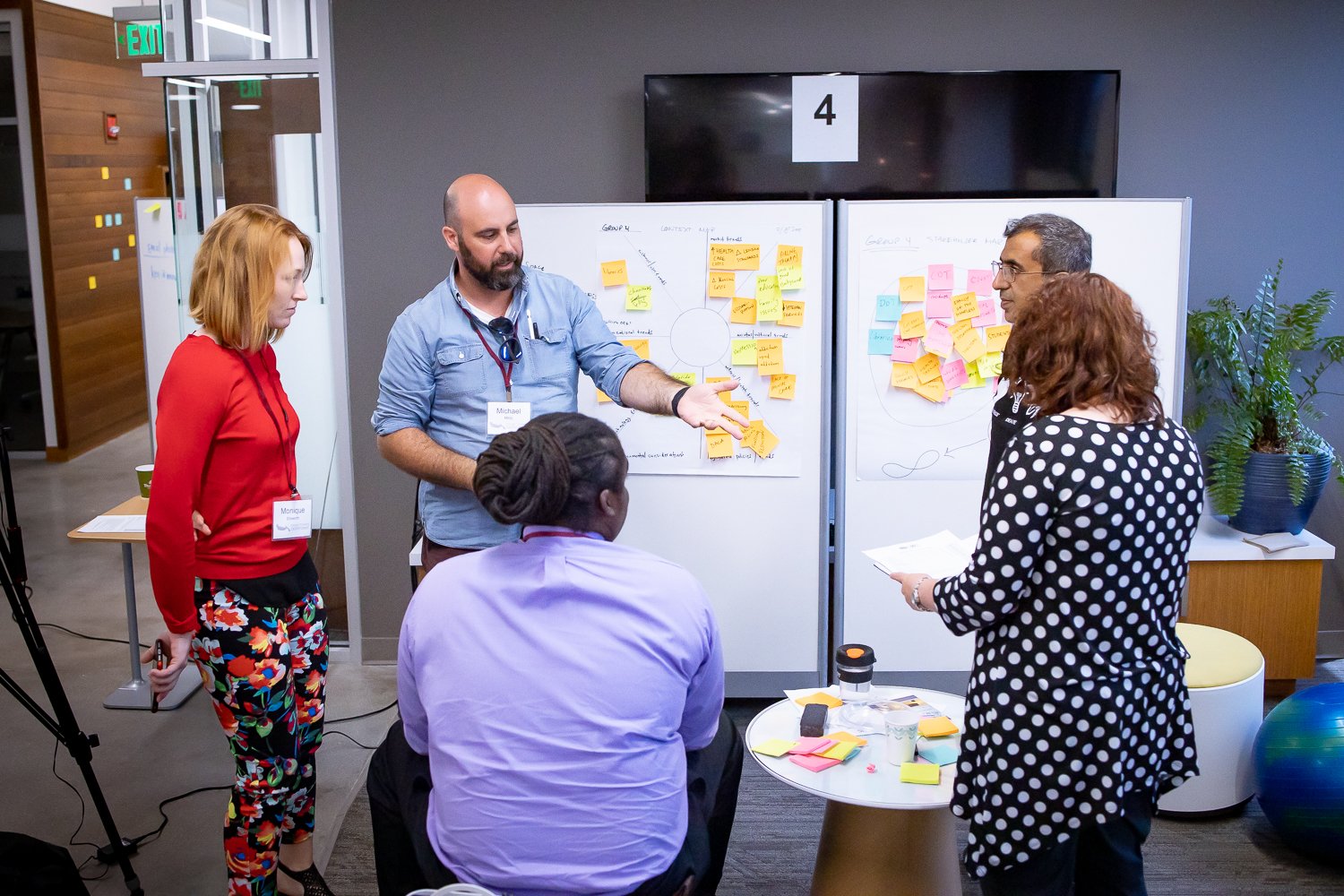
Scientific Innovation Strategies:
Design Sprint
DESIGN THINKING
Design Thinking is a human-centered innovation method which provides a framework to collaboratively develop impactful solutions through iteration.
Design Thinking Process
Use the navigation at the top of the page to jump to each design thinking phase as we unlock each throughout the course.
Explore current reality
Imagine a better future
Make some choices & try it out
Take things into the real world
Through this course, you will learn by doing. There are no homework assignments. Your grade is determined by participation and a solution pitch the final day of the course.
Some examples that use design thinking to improve healthcare approaches:
Empowered Health Cancer-Free Challenge at OpenIdeo.com, sponsored by the Center for Disease Control Foundation.
Optimizing Health Span: Living Well at Every Age at the Stanford Center on Longevity
Impacting Schizophrenia Care example at ideo.com
THRIVE innovation via Margo Brooks Carthon at the University of Pennsylvania.
In-Hospital Hand Sanitizing with SwipeSense at North Shore University Health System
You can check out the Innovation Hub’s lists of books, websites, and videos by scrolling to the bottom of this page.
Note: Systems Thinking is another innovation method that maps complex systems and their relationships to each other, allowing a design team to make sense of dynamic, interrelated components and propose impactful solutions. We won’t be using it in this course, but it can be extremely useful in complex healthcare innovation. Check out this article from the American Medical Association to get you started.
EMPATHIZE
(RE-FRAME)
IDEATE
PROTOTYPE
TEST
PITCH
Preparation is key.
Define the design challenge.
Determine who should be on the design team.
Establish the context of the problem and who they key stakeholders are.
Define measureable success criteria. “Start at the end”
Empathy sets Design Thinking apart from other design methodologies. It is the first step and a crucial component of each cycle of the design thinking process to establish a deep understanding of the problem, empathizing with the people who experience it and how it affects them.
Define clearly which aspect of the problem you aim to tackle and who you are serving.
Unleashing creativity and considering all possibilities using facilitated ideation tools maximizes individual creativity and team collaboration. Anything is possible in this phase! Here we will explore different strategies to maximize ideation.
How do you build out your solution? You’ll have to make some choices to narrow things down and determine which features are most critical to your user.
Not only do you need to test if your approach is feasible and your prototype functions as intended, you’ll need to get feedback from your stakeholders to determine if the prototype meets their needs. Circle back to those you spoke to in the empathy phase and listen to feedback. Information on this stage is available on the prototype page.
Pitching your idea to stakeholders and investors in a short, easy to understand format is an essential skill. You’ll practice doing this at the end of the design sprint as your final deliverable.

